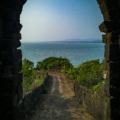Best Time To Visit Agra

In this Blog
November to February is considered peak season to travel to Agra
What to expect:
- Enjoy cool, comfortable temperatures perfect for sightseeing.
- Experience cultural events like the Taj Mahotsav adding a festive charm to your visit.
- Expect more tourists at top attractions, so plan ahead for tickets and accommodations.
July to September is considered moderate season to visit Agra
What to expect:
- Temperatures range from 25°C to 35°C, offering relief from summer heat but still a bit humid.
- Enjoy the beauty of rain-drenched monuments, with the Taj Mahal looking especially stunning in the rain.
- Be prepared for intermittent rainfall, so pack an umbrella or raincoat for sightseeing.
April to July is considered off season in Agra
What to expect:
- Fewer visitors mean you can explore iconic sites like the Taj Mahal without the crowds.
- Take advantage of lower hotel prices and discounted travel deals during the off-season.
- The heat can limit your sightseeing options, so early morning visits are recommended.
Best time to visit Agra
Agra is a place that can be visited any time of the year, but the best time to visit really depends on what you’re after! Let’s break it down:
Agra in Summer (April to June): Given that May is the hottest month, temperatures can push up to 40 degrees Celsius. However, as hot as it gets, the number of people reduces which allows you to visit the Taj Mahal and other sites without having to wait in long queues. It’s also the off-peak season which means prices will be much cheaper. To enjoy this serenity, one has to be able withstand the heat and travel during early mornings while wearing cotton clothes, sunscreen and carrying water. It’s worth it for the serenity.
Agra in Monsoon (July to September): The scorching temperatures between 25 to 35 degrees Celsius can cool down thanks to the heavy downpours. Agra in the rainy season has its own unique charm, be it the vibrant greenish look that all the monuments receive or the magical Taj Mahal with water droplets on its white marble. There are downsides to the monsoon season which is the increased humidity. But the Kailash Fair in August adds a vibrant touch, especially if you want to immerse yourself in local culture. An umbrella, raincoat, and sturdy shoes will keep you dry and comfy.
Agra in Winter (October to March): Particularly the months from October to March are the best for visiting Agra. Due to the temperature dipping to two degrees Celsius, the atmosphere becomes much more enjoyable. Taj Mahotsav in February brings local handicrafts, food, and performances near the Taj Mahal. Though the mornings are chilly, the rest of the day has pleasant temperatures ideal for touring, however due to the peak season the prices and crowds are quite high, so do be ready for that. Pack your sweaters and scarves.
So, whether you enjoy the off-season calm, a rainy romance, or crisp winter charm, Agra welcomes you all year round.
Frequently Asked Questions about the best time to visit Agra
1. What is the best time to visit Agra for pleasant weather?
The best time to visit Agra is during winters which is from October to March. The temperature typically ranges between 7° to 36°C allowing a comfortable stay and sightseeing. The mornings tend to be fresh and filled with fog, while the afternoons are warm and the evenings are cold particularly up to December and January. Winter also brings festivals like the Taj Mahotsav, adding a cultural touch to your visit.
2. How hot does Agra get in summer?
Agra experiences extreme weather conditions, so during the summers the temperature reaches around 40 degrees Celsius. The heat is intense and dry, especially in April to June. The summer in Agra is quite intense for people so if you’re up to a challenge consider going in the earlier mornings which would suit you better. You’ll also enjoy the Taj Mahal and other sights without battling the crowds.
3. Does Agra experience a lot of rainfall in monsoon?
Yes, Agra receives monsoon rains typically during July and September. Agra however receives mid-range rainfall, with August being the wettest month. While the rain cools down the temperature, it also brings some humidity. However, this is a fantastic time to visit if you love the beauty of rain-drenched monuments
4. Is Agra less crowded in summer?
Agra sees fewer tourists during the months of April to June, which explains why summer is classified as the off-season there. This is perhaps one of the advantages of being there between the months of April to June – exploring the city and sights such as the Taj Mahal can be done freely and with an easy mind.
5. What are the must-see festivals in Agra?
There are various festivals in Agra which makes the city active and especially winters are fun! A great one is the Taj Mahotsav which happens in February for the first 10 days when the culture is celebrated in front of the Taj Mahal. Folk songs, music and other such activities are demonstrated along with crafts and artworks. The Barrett Fair is a must for those interested in dealing with culture which occurs every October and November. If you happen to go in between August and September, don’t miss out on the Kailash Fair which is regarded as the religious function of the Kailash temple.





